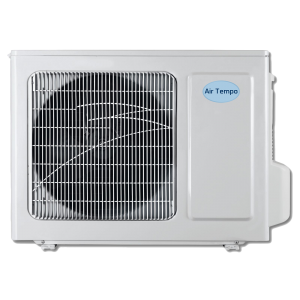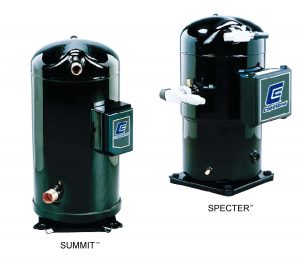The Mini Split Inverter Technology

What is a mini split system ?
Mini-Split, also known as ductless, or wall mounted air conditioners are becoming increasingly popular. Similar to central air conditioning units, mini split air conditioners have two main components: an outdoor compressor/condenser, and an indoor blower, or air-handling unit. A small hole ( approximately 3 inches in diameter) to connect the refrigerant lines between the outdoor and indoor units. The main advantages of split air conditioners are their small size and flexibility for zoning, heating, or cooling individual rooms. Each room, or zone has an independent thermostat so only that area where someone is present needs to be conditioned, saving energy and money. Since the compressor is located outside the house, the split air conditioner is very quiet and efficient. While it is more expensive than a window air conditioning unit, it does not need to be removed, stored, and reinstalled every year. In fact most of the mini-split units on the market today offer the capability of both heating and cooling while consuming considerably less electricity than standard systems.
What is an inverter ?
A standard ( rotary or scroll compressor) contains a motor that operates like a light switch. It`s either on or off, there is no in between. An inverter compressor, on the other hands runs at variable speeds, it only uses enough power to reach the desired setting. For example if the room becomes hot and the compressor needs to cool it by a couple of degrees, a rotary compressor will turn “on” with full power, while an inverter compressor only uses enough resources (RPM) to cool the room’ to the desired temperature. During a normal day of operation, a standard compressor will have to turn on and off dozens of times. An inverter compressor will turn on and reach the desired setting and then idle at a low speed at that setting until needed further. The inverter compressor, by using variable speeds, saves energy and operates more quietly than the standard compressor. The lifespan of the inverter compressor is increased dramatically due to its not having to turn on and off continuously. When a lot of heat, or cooling is needed, the inverter compressor operates at a much higher RPM speed than the standard compressor, reducing the time to achieve the desired temperature and as well as your energy costs. Research indicates that an inverter compressor operates with 50% of the energy consumption required by a rotary compressor.

Advantages of a mini split system ?
COST
Mini-Splits, or ductless air conditioning systems are significantly less expensive than central air conditioning systems. Not only does it cost less to purchase and install, it is significantly more efficient and less expensive to operate.
EFFICIENCY
Ductless split systems have become increasingly more efficient since minimum requirements rose to 13 SEER. Most ductwork systems lose more than 15% of the conditioned air through leaks and cracks in the ducts. Users are paying to cool the air in the attics and the spaces between the ceilings and floors.
NO DUCTS
Many homes, especially use electric baseboard heating and therefore were not built with ducts. Installing a central air conditioning system would require adding ductwork . With a wall mounted mini split air conditioning system there is no need for added ductwork. Refrigerant line sets and wiring can easily run through attics, walls and ceilings to connect the indoor blower to the outdoor condenser.
ZONE CONTROLE
Many homes with existing central air conditioners can use a mini split air conditioner to cool the warmer areas. It is not unusual for some parts of the home to be warmer than others. Rather than keeping your central air conditioner at 65° F to cool your upper level to 75°F, installing a mini split unit in these areas its a flexible solution for a maximum efficiency.
